The Philodendron Erubescens White Princess is a beautiful and unique climbing plant with gleaming green and white variegated foliage that has recently gained popularity among plant lovers. The plant is adored for its stunning variegated leaves, which have a pinkish hue when young. The plant is also known for being very easy to care for, making it an excellent choice for those new to growing plants.
White Princess Philodendron is a rare Aroid houseplant featuring pointy green leaves with lots of white variegated speckles. This plant is both decorative and easy to care for indoor jungles. In addition to being easy to care for, the plant is also known for being very tolerant of different types of weather and soils. This blog post will take a closer look at this remarkable plant and what makes it so special.
Closely-Related Allied Species: Philodendron White Knight, Philodendron Florida Ghost, Philodendron Verrucosum, Philodendron Rugosum, Philodendron Spiritus Sancti , Philodendron Moonlight.
Related Products:
Origin And Family
The Philodendron white princess, also known as White Princess Philodendron, is a hybrid perennial in the Araceae group native to the rainforests of South America, meaning that it’s always going to do best in a tropical climate that is warm and humid. It is an epiphytic Philodendron that likes to climb on to something with its aerial roots. It can also be grown outdoors in hardiness zones 9-11.
| Botanical Name: | Philodendron Erubescens ‘White Princess’ |
| Family Name: | Araceae |
| Other names: | White Princess, White Philodendron, White-Leaf Philodendron |
| Plant Type: | Vine, perennial |
| Origin: | South America |
| Color: | White marbled or half-moon variegated leaves |
| Height: | Avg. Up to 4 Feet |
| Humidity: | 60% to 80%. |
| Temperature: | 18ºC to 28ºC( 64ºF-82 ºF) |
| Light Need | Bright, indirect light |
| Propagation | stem cutting |
| Hardiness Zones | 9-11 |
| Preferred pH | 5.6-7 (mildly acidic-neutral) |
| Soil type | Well-drained organic soil |
| Common Pests & Diseases | Mealybugs, spider mites, fungus gnats ,brown tips, root rot, drooping leaves |
Royal Court or Triple Crown Philodendron
The bundle of Philodendron White Wizard, White Knight, and White Princess is referred to as a ‘Triple crown’ by the plant collectors and ‘Royal Court’ when you have Pink Princess with them. White Princess is usually mistaken for the Philodendron White Knight and Philodendron White Wizard, especially by beginners, as ‘Triple Crown’ Philodendrons all have identical variegated foliage, particularly when they are in the juvenile stage. However, there are a couple of differences between Philodendron White Princess, White Wizard, and White Knight to tell them apart.
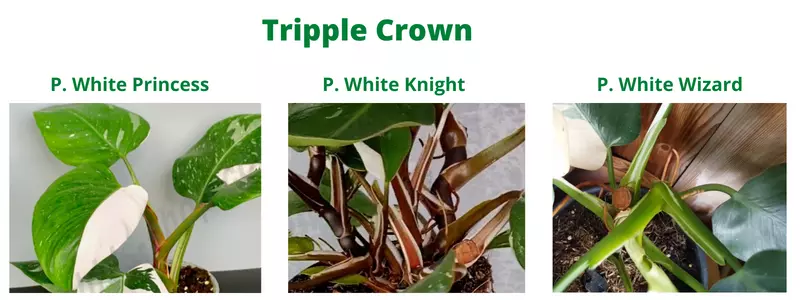
Philodendron White Princess vs. White Knight
Both Philodendrons are climbers featuring pointy heart-shaped green leaves with white variegated speckles and blotches, but the stem and petioles’ color differentiate them. White Knight has burgundy or brownish red stem and petioles with white sheaths, whereas White Princess features a green stem and petioles with pink or red and white lines along the petiolar sheaths. Juvenile leaves of White princess are narrow and elongated. On the contrary, White Knight’s leaves are wider and rounder .
Philodendron White Wizard vs. White Princess
White Wizard is the easiest to identify compared to White Knight and White Princess as it only features a green and white color. White Princess and White wizard are climbing Philodendrons featuring variegated and half-moon leaves. The white wizard has a green stem and petioles bordered with white petiolar sheaths, unlike the White princess, which has pink and white petiolar sheaths. Moreover, White Princess also has a pinkish hue in the foliage and a few pink lines along the stem as it grow to a mature plant.
White Princess Vs. Pink Princess
White Princess’s white-flecked variegated green rounded heart-shaped leaves and stem’s color distinguish it from Philodendron Pink Princess. The later Philodendron has a deep reddish stem and Variegated pink leaves, unlike the white Princess, which features Variegated white and green leaves.
How do you take care of a White Princess Philodendron?
White Princess is best kept indoors as it will thrive in indirect sunlight. This plant is easy to care for and is deficient in maintenance. To ensure your Philodendron White Prince is plump and healthy, you can place it in a warm environment.

Adding White Princess to your Houseplants
Before introducing White Princess to your other house plants, we recommend inspecting your new plant and ensuring it’s free of pests or any disease. Please keep your new White Princess in quarantine for around two weeks and inspect the leaves and stem for any sign of pest or disease. If found any treat the plant with pesticides and keep it separate until it’s pest-free. This will prevent spread of any pests or diseases.
Moreover, you can also shower the leaves thoroughly to get rid of any hidden pest after quarantine and then place it with your houseplants. If you want to grow White Princess outdoors, make sure to harden off the plant before putting it outside.

Philodendron White Princess Plant Size and Growth
P. White Princess is a climber and epiphytic in nature as it grows areal roots that cling to other trees or moss poles. Under favorable conditions, P. White Princess can grow up to 3 m tall and leaves around 20cm long. If you mimic the natural environment indoors, it usually grows up to 3 feet (or 1m) tall when mounted to any support.

It is a moderate-growing plant ( fast grower compared to variegated plants), usually producing one to two leaves monthly. White Princess usually grows white and green marbled leaves around 1 foot long, including stunning half-moon leaves- meaning half white and half green leaf split evenly down the center of the leaf.
Is the Philodendron White Princess a climbing plant?
Since White Princess is a climbing Aroid that grows aerial roots to cling on to something; therefore we recommend providing a moss pole to your White princess to help it grow faster with large leaves. When you mount it with a moss pole, I have observed that the plant’s growth is robust, and a small cutting can reach up to 3 feet in a year.
Support
Moreover, as the plant matures, the top stem thickens compared to the bottom stem, making it susceptible to snapping. The top-heavy plant becomes wobbly and to keep it upright, you need to mount it with proper support. Moss pole not only provides support but also lets aerial roots absorb nutrients and water to produce healthier, more giant leaves and stronger stem.

Light Requirement of White Princess
Lighting plays a vital role in the variegation of the Philodendron White Princess. They love a spot that receives lots of natural bright daylight, preferably an east or west-facing window where they can enjoy gentle morning and evening sunlight. In the case of a south-facing window, keep plants a few feet away from the window to avoid burning of leaves due to intense sunlight. If you are growing your plant under grow light, we recommend using strip grow light and 300-400 CF light for 6 to 8 hours.
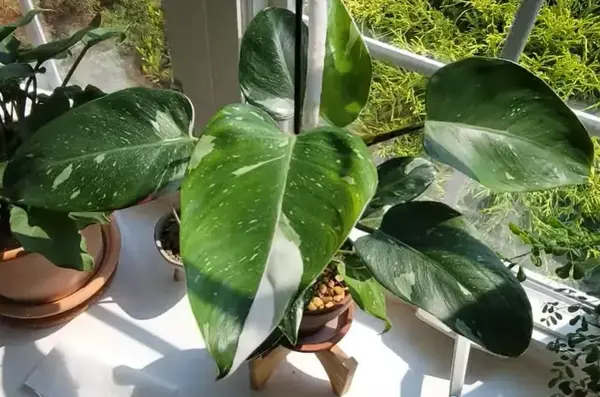
As White Princess foliage is variegated, intense or direct sunlight can scorch and burn the white variegation quickly. Similarly, the green bits may also burn and will turn brown. If you want to give your plant direct sunlight, introduce it to morning sunlight for half an hour, see the effect on the foliage, and gradually increase the time. Beware not to give your White Princess direct noon sunlight; it will burn the sensitive white foliage.
Low Light Effect on White Princess
On the flip side if your White Princes don’t receive enough light , they will begin to sacrifice the white variegated bits just because they can’t absorb light and photosynthesize in the same way as the rest of the plants. Therefore, it will usually choose to let those white bits go, to conserve its energy and focus on green, healthy growth.
During winter, when the plants are not receiving as much natural light , I tend to move my plants under grow lights to keep them as active as possible. Otherwise, they go into a natural dormancy period over winter. Moreover, over time, inadequate lighting conditions will likely cause the growth to become quite stretched and leggy. As well as it will also cause the variegation to start to fade potentially.

Water Requirement
As tropical plants, White Princess plants are used to being on the dry side and may need to water every 7-10 days. White Princess Philodendron likes its soil to dry out slightly between waterings and is susceptible to issues caused by over watering such as root rots.
Whenever you see that the soil is starting to dry out, just stick your finger down in the soil and feel how much moisture there is in the soil. You can use a moisture meter or chopstick to monitor the moisture. If you put the chopstick all the way down and there’s soil stuck to it, just wait a little bit longer before watering.
If the top few inches of soil are completely dried out, go ahead and water her again. It’s essential to monitor the soil moisture because the frequency of watering your plant will vary depending on your house’s environment (temperature, humidity, and light intensity). As we move into the winter months and the light period is shorter, you need to water less.
Aroids don’t like to sit in water; therefore, when you water, let the excess water drains out through the drainage holes. For Philodendron White Princess, it is preferable to keep it under water than waterlogged to prevent root rot and fungal problems. Self-watering planters are great for this type of Philodendrons. Always use distilled water to avoid browning tips due to tap water fluorides and chlorides.

Temperature
White Princess is a tropical plant native to rainforests, hence thrives in a warm environment. You can grow White Princess both inside and outside of our home, but always take great care of the lighting it receives and the temperature of the moment. The White Princess prefers a steady temperature of 18ºC to 28ºC( 64ºF-82 ºF).
When the strong cold of winter arrives, you have to move it inside the home. Whenever the temperature drops below 10º C, you must place it indoors. Although they appreciate good airflow, these plants hate cold draughts. Therefore, make sure to keep them away from draught windows, doors, and A.C.vents.
Humidity
White Princess won’t cope well with the low humidity and tend to enjoy 60% to 90% humidity. They grow best in an environment that provides at least 60% humidity, but the more, the better to keep them happier. You can use a hygrometer to check the temperature and humidity for better care of your plant.
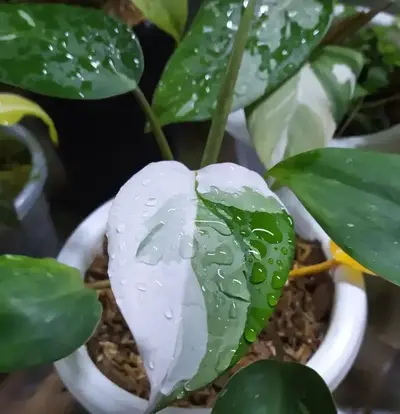
You can increase the humidity in your house in a couple of ways.
Lack of humidity can cause browning leaves, the white variegated parts particularly. If you’ve got radiators or fan heaters running, they can remove so much natural humidity from the air. You need to be extra vigilant of the fact that you may need to increase the humidity level. You can put a cup of water on top of the radiator so that when it heats up, the moisture will evaporate and kind of restore a bit of the humidity to the environment for your plants.

Soil Requirement
Aroid thrives best in chunky, well-draining, moist soil where roots can get proper aeration. Typical potting mix is a too dense substrate for White Princess and may cause root rot due to water logging. The ideal substrate for this plant is any good organic-rich Aroid potting mix that is light and airy. You can also make your potting mix for White Princess by mixing the following ingredients;
If you get out of hand with watering, it is ideal that you add extra perlite to the substrate; it will make the soil dry faster. White Princess grows best in mildly acidic to neutral soil ( 5.6- 7 pH) and to ensure you can use Rapitest Test Kit for Soil pH.

Potting
Philodendron White Princess thrives best in a pot with proper drainage holes to provide aeration to the roots. We recommend using a transparent plastic pot with side aeration holes or terracotta pots for this plant. You can also use PON substrate and keep it in a self-watering pot. I have noticed many Philodendrons grow best in this way. Don’t use large pots for White Princess as it will not let the soil dries out and may cause fungal issues.
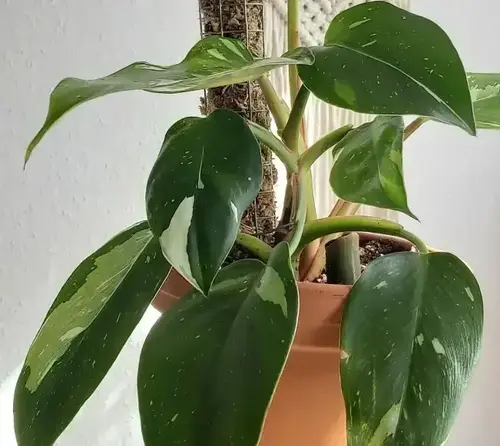
Repotting
White Princess is relatively a fast grower plant and may need repotting every 12 or 18 months as it continues to increase in size. Follow a step-by-step guide to repot your white Princess.

Fertilizing
Over the active months- spring and summer, adding fertilizer into your watering routine helps to support and encourage healthy growth.
You can fertilize this plant every time you water it during the growing season using a gentle diluted liquid fertilizer or slow-release fertilizer. You can also use any good Nitrogen-based fertilizer to encourage new foliage growth, and another way to fertilize is;
- Fertilize monthly during Spring and Summer when the plant is active
- Fertilize every 6 to 8 weeks when the plant is dormant during fall and winter.
Beware, not giving them too much else it will cause yellowing and burning of plant foliage. If you’ve never fertilized your plant before, we recommend starting with a little bit less than it says on the bottle and gradually building it up over time instead of starting with the full amount. Plants repotted recently using a good quality potting mix should not need to be fertilized for at least three months.

How do You Propagate Philodendron White Princess?
Like its counterparts, White Knight and White Wizard, you can propagate the White Princess through stem cutting. As this plant grows aerial roots, it can also be propagated through the air layering method, which eventually involves stem cutting. Depending on the size of your White Princess mother plant, you can take either the top cutting or the side cutting( off shoot).
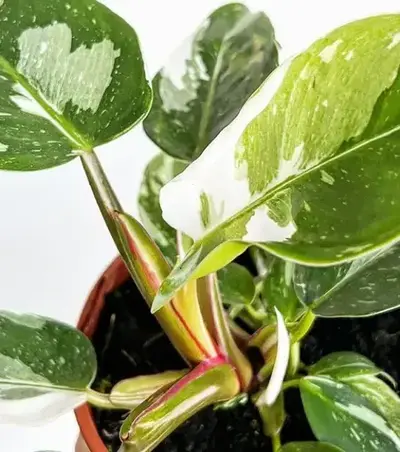
Stem Cutting
You can follow the following step-by-step guide to propagate your Philodendron White Princess by stem cutting;
Once you get the cuttings, there are a few mediums or substrates you can use to propagate your cuttings. If you take multiple cutting, we suggest different mediums for propagation to increase the success rate.
Water Propagation
This is the most common and successful propagating medium. If your cutting has minimal areal roots, we suggest propagating your cutting in the water.
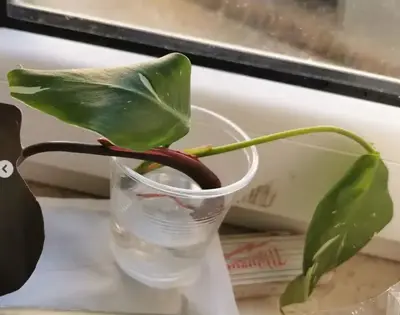
Propagation in PON or LECA
These days PON and LECA substrate are used for propagating the cuttings of Philodendron by many plant parents to avoid any chance of root rot. You can put your cutting into PON or LECA mediums for propagation.
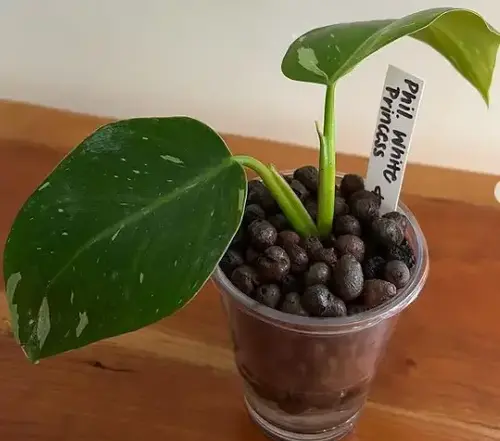
Propagating Stem Cuttings in Sphagnum Moss
Propagating stem cutting in sphagnum moss is usually faster and more successful than any other medium.
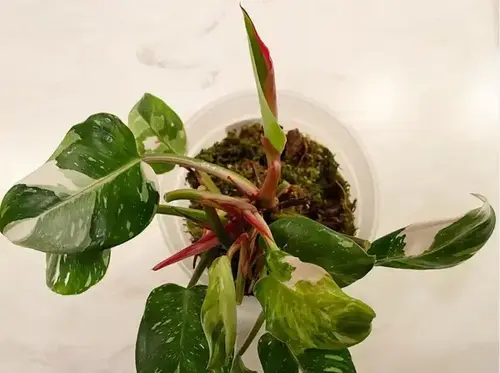
Air Layering Method:
Philodendron White Princess grows aerial roots making it a perfect candidate for propagation through the air layering method. In this method, you choose a node on the stem where you want to take the cutting from the mother plant. You will wrap the node with moist sphagnum moss and then cover the moss with any plastic sheet.
You can also use air layering pods to cover the sphagnum moss. They have proven helpful for the air layering method. You can air-layered multiple nodes depending on how many cuttings you want.
Within a couple of weeks, you will notice root growth from the node covered in sphagnum moss. Once enough roots are grown, you can take a sterilized pair of sharp shears or scissors and cut the stem having a node with newly grown roots. The good thing is that the cutting already has grown enough roots and can be potted directly into a well-draining aroid potting mix to continue as a new plant.
Keep in mind that after propagation, the mother plant’s growth may slow down a bit. The best time to propagate White Princess is Spring or early summer when the plant growth is active.

Pruning and Maintenance
Philodendron White princess does not require frequent pruning, unlike rambunctious vining plants. You can use sterilized shears or a pair of scissors to prune any dead or damaged leaves occasionally. Moreover, if the top part of the stem of your plant gets thicker, making the plant top heavy, you can prune the top part to prevent it from snapping.
Cleaning the White Princess leaves not only keep it safe from pests , also allows your plant to maximize its light absorption. White Princess is a fast-growing plant, unlike many variegated plants that chase the light. Therefore, just rotating their pots every few weeks helps them absorb equal amounts of light from all angles and will not become kind of leaning or lopsided.

Toxicity of White Princess Philodendron
Like all Philodendrons of the Araceae family, the White Princess plant also contains calcium oxalate, which is toxic to humans and pets.
If ingested by children, symptoms could be swelling of the mouth and tongue, and they may have difficulty breathing. Moreover, ingestion of leaves of White Princess Philodendron by pets can cause drooling, vomiting, or a swollen mouth or tongue.

Common Problems of White Princess Philodendron
Philodendron White Princess is usually easy-to-take care of and a problem-free houseplant. However, like any other house plant, you may need to keep an eye on the leaves for any sign of pests or problems.
Pests
From my experience, White Princess is not plagued by many pests. I have occasionally noticed spider mites, scale, thrips, and mealy bugs on this beauty. You may find Mealybugs sticking on petioles and in this plant’s nooks and crannies ( sheaths).
Mealybugs suck the sap, weaken the plant, and cause drooping of the leaves. If your White Princess is not growing, you can check the roots. Sometimes mealy bugs live in the roots and do not let the plant grow. You can manually remove the mealy bugs or can use any good insecticidal sprays to kill the mealy bugs. I make my own insecticidal spray solution for pests by mixing;
- liquid soap
- Neem oil
- Few drops of insecticidal liquid
- Add water
Spray the plant with this insecticidal solution thoroughly. Make sure to spray under the leaves and the soil. This solution treats most pests, including spider mites and mealybugs. Usually, pests don’t get out of control on White Princess.
For more pest problem you can refer to our complete guide on Houseplant pest and their remedies.
Fungus Gnats
If the topsoil of your White Princess always stays moist, it might have fungus Gnats that will feed on your plant’s roots. Always water your plant when the top few inches of soil dry completely. You can also bottom water your plant or use self-watering planters to prevent Fungal Gnats. You can try using yellow sticky traps to get rid of fungus gnats. Moreover, sprinkling Diatomaceous powder on the top soil prevents the formation of lumps, hence getting rid of Fungal Gnats.
Diseases
Root Rot
Philodendron White Princess is prone to root rot as they like moist, airy soil medium to grow. If the soil is not chunky, the root will not get enough aeration, or if the soil stays damp, the plant may suffer from root rot. As a symptom, the leaves will start yellowing and wilting. You need to cut the rotted roots and replace the waterlogged soil with a new soil mix.
Brown Leaf Tips
If the tips of your White Princes are browning, it signifies a lack of humidity. Moreover, it also leads to the browning of the edges of the leaves of White Princess. Another reason for brown leaf tips might be the tap water containing salts and minerals. Use distilled water for your White princess. Brown or crispy leaf tips can also be caused due to overfertilization.
Bacterial Leaf Spots
If there is too much humidity in the environment or you mist your White Princess, and water droplets stay on the leaves for longer, it may lead to bacterial leaf spots. Bacterial spots are yellow, black, or dark brown marks on the plant’s foliage. Prune the affected leaves and stop misting. You can use a humidifier to increase the humidity.
FAQs
Why White Princess Philodendron’s leaves are drooping?
The leaves of the plant droop if it is under-watered or there are long gaps between each watering. If the soil stays damps, it can also cause drooping. We suggest revising your watering routine and repot the plant in a chunky and airy potting mix. Moreover, if mealy bugs infest your plant’s roots, it may also cause drooping of leaves. Treat your White Princess with insecticidal spray.
Is Philodendron White Princess rare?
Philodendron ‘White Princess’ is a remarkable, sought-out tropical plant, but it is not a rare plant. Back in 2021, plant lovers had difficulty getting White Princess due to high demand. But White Princess is cultivated massively and is available in the market to grab. However, plant collectors adored this plant due to its white and green variegated leaves and white and red streaks along the petioles.
Is Philodendron White Princess fast-growing?
Philodendron White Princess are fast growers, unlike other variegated plants. There is a misconception about this plant being a slow grower. Providing favorable conditions, this plant can grow up to several feet from a small cutting in just one year.
Do all White Princess Philodendron have pink?
Not all cultivars of White Princess have pink variegation. Some Philodendron ‘White Princess’ cultivars feature narrow pointed green leaves with white and pink variegation. They even can grow pink half-moon leaves similar to pink Princess.
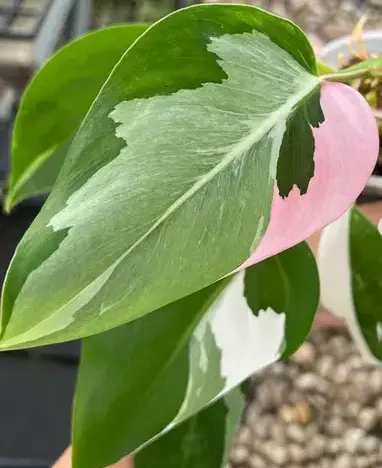
How do you increase variegation in White Princess?
Philodendron White Princess needs bright indirect sunlight for 6 to 8 hours to encourage variegation. If they don’t get enough light, they might revert. You can use grow lights to give your plant enough light if you don’t have any bright spots.
How to make White Princess Philodendron grow faster?
To increase the growth of your White Princess, you can mount it to a moss pole to which its aerial roots can cling onto and absorb nutrients to grow bigger leaves. Moreover, you can fertilize your plant with nitrogen-based fertilizer to encourage growth in foliage.
Why my White Princess Philodendron is getting leggy?
The White Princess thrives in bright light, and if kept in low light, it would stretch towards light resulting in a leggy plant.
Does White Princess Philodendrons Bloom?
White Princess rarely bloom when they grow into mature plants.
Conclusion
The Philodendron White Princess features stunning foliage and grows beautifully indoors. It will brighten up your place with its huge variegated leaves. No plant collection is complete without Triple Crown Philodendrons- White Knight, White Wizard, and White Princess.
Related Posts
Philodendron Melanochrysum Care & Growing Guide
Philodendron ‘Splendid’ is a stunning hybrid of two stunning species of the Araceae family: Philodendron Melanochrysum and Verrucosum.
Philodendron Burle Marx Care & Propagation Guide
The most notable feature of the Philodendron Burle Marx is its large, glossy leaves, which come in heart-shaped or arrow-shaped variations.
Philodendron Scandens-“Sweetheart Plant” Easy Care Tips
Philodendron Scandens, often called the “Heartleaf Philodendron” or the “Sweetheart Plant” is a classic and most loved trailing houseplant.
Philodendron Erubescens ‘Imperial Red’ Care Tips
The Imperial Red Philodendron is easy to grow and can thrive well with little care and attention. Botanically known as Philodendron Erubescens.
Philodendron Ring of Fire Care & Growing Tips
Philodendron Ring of Fire is a striking plant known for its vibrant foliage and is believed a hybrid of Philodendron Wendlandii and P.Tortum.


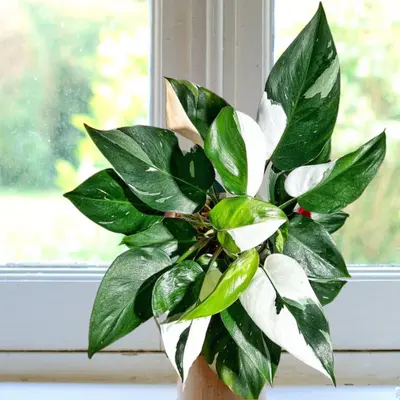
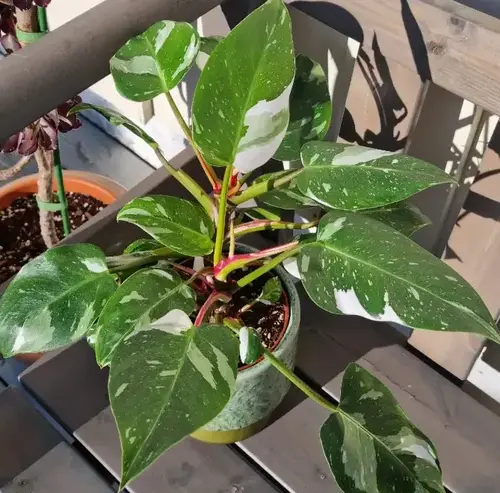
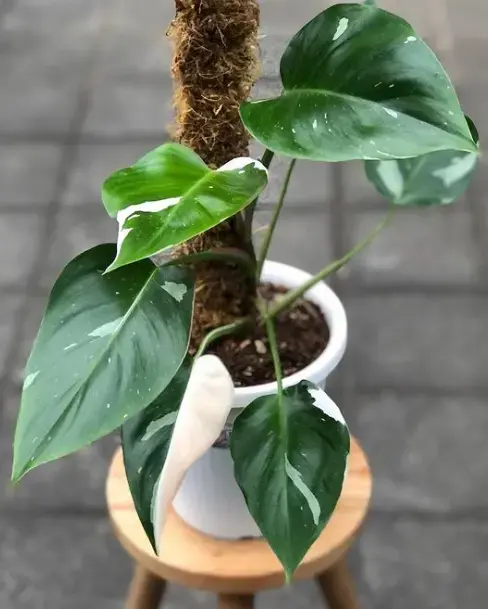
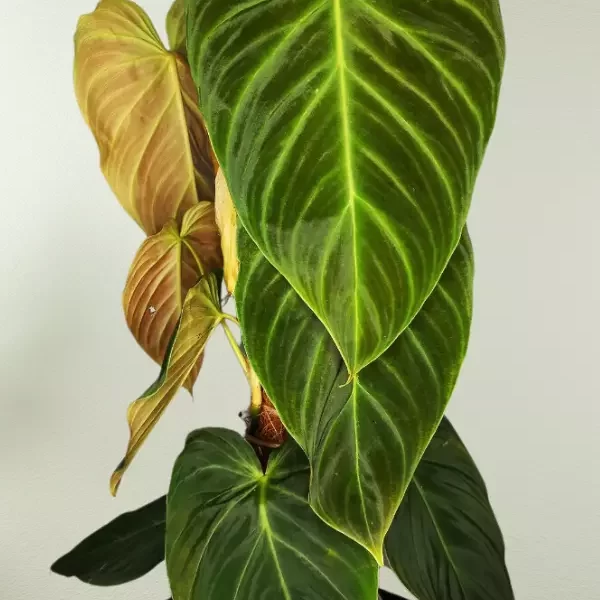

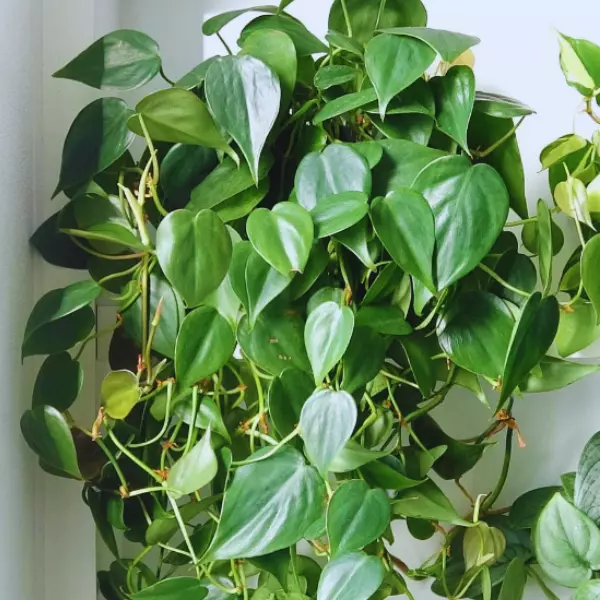
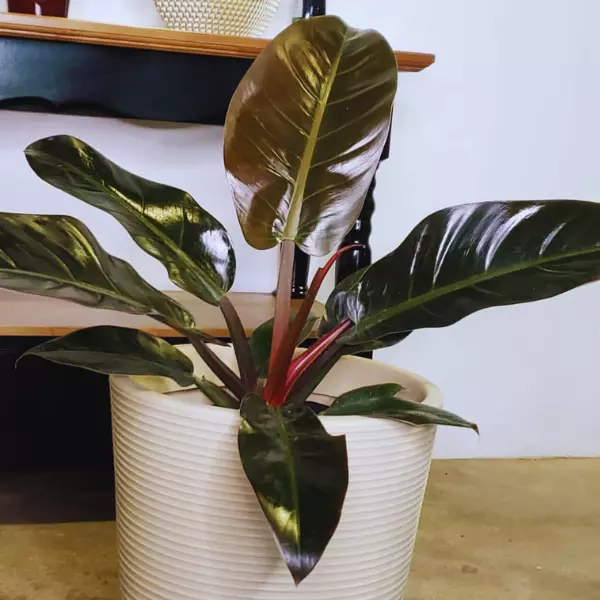

I conceive you have noted some very interesting details , thanks for the post.